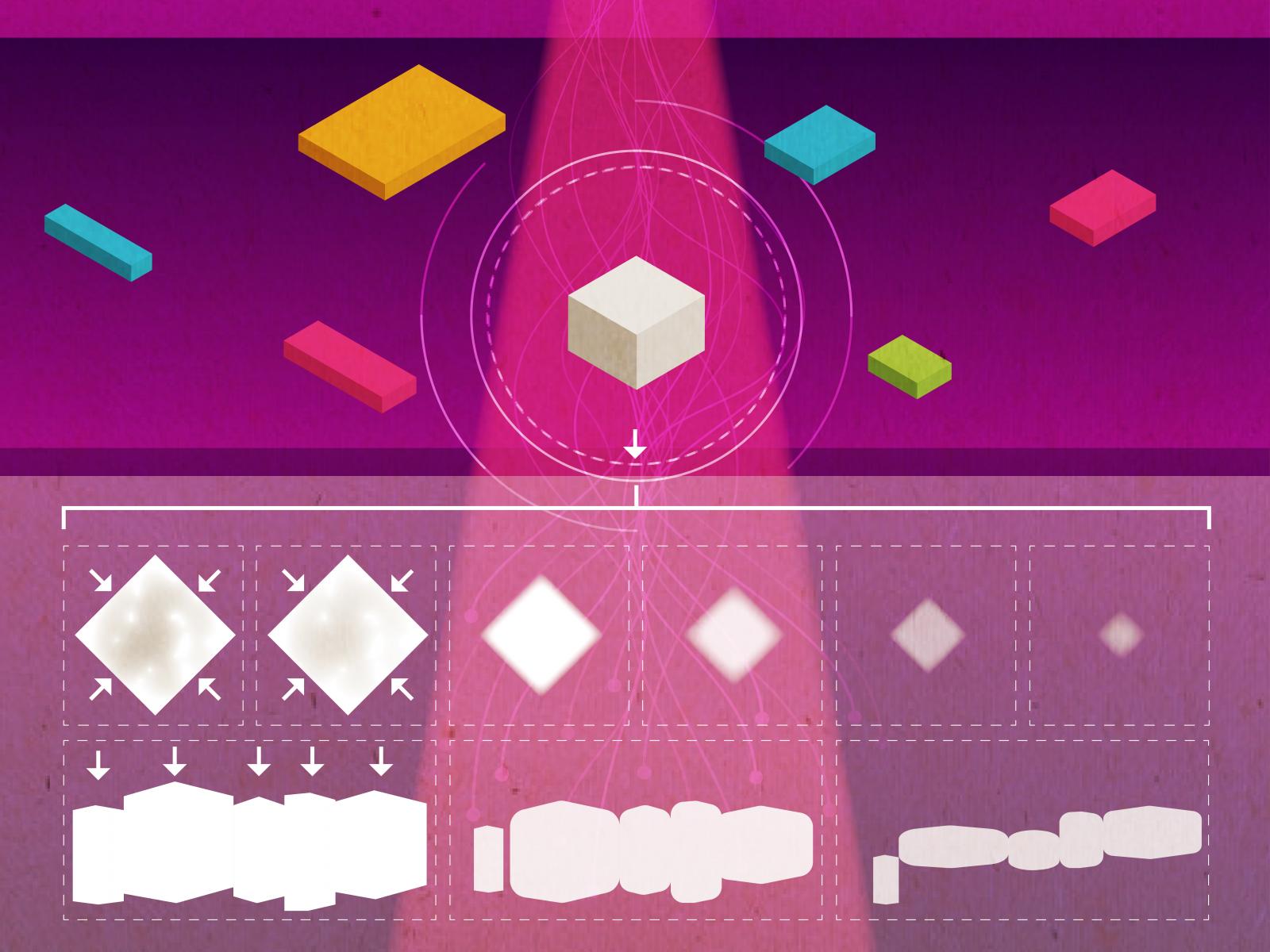Watching the Behavior of Irradiated Boehmite Particles
The amount of radiation influences how fast aggregated boehmite particles dissolve

The dissolution behavior of individual and aggregated boehmite platelets depends on the strength of incoming radiation.
(Image by Stephanie King | Pacific Northwest National Laboratory)
The Science
Boehmite is an aluminum-based material found in nuclear tank wastes. Small flat boehmite particles have the tendency to aggregate into larger stacks with a specific orientation. Developing a better understanding of how these particles come together and dissolve can help workers process nuclear waste. A new study explored the dynamics of individual and aggregated flat boehmite particles, known as platelets, irradiated under an electron beam. Using liquid-phase transmission electron microscopy, researchers observed that the amount of radiation from the electron beam strongly influenced the rate at which the individual particles and particle aggregates dissolved. At high electron beam intensities, the aggregates began to break apart and then dissolve.
The Impact
A significant fraction of nuclear waste is made up of non-radioactive components that must be retrieved and processed prior to storage or disposal. Aluminum containing materials, including boehmite, are found in significant quantities in waste tanks at the Department of Energy’s Hanford and Savannah River Sites. Understanding how to efficiently retrieve boehmite from the tanks can make processing more effective. This work increases scientific knowledge of both oriented attachment and dissolution in boehmite. This can help develop new methods to control boehmite dissolution in a complex mixture of nuclear tank waste.
Summary
Several studies have examined the radiation stability of boehmite and other aluminum oxyhydroxides. However, less is known about how radiation affects boehmite aggregation and dissolution. This work uses liquid-phase transmission electron microscopy to reveal radiation effects on the dissolution behavior of individual and aggregated boehmite nanoplatelets. The data showed that nanoplatelets projected along the [010] direction exhibited a uniform dissolution that strongly depended on how many electrons moved through the sample. In nanoplatelets that underwent oriented aggregation, the particles at the ends of the stacks, which were more accessible to the bulk solution, dissolved faster than the particles located inside the aggregate. In addition, at higher dose rates, electrostatic repulsion and knock-on damage from the electron beam broke apart the stacks. After de-stacking, the interfaces between particles in the aggregate began to dissolve.
PNNL Contact
Greg Kimmel, Pacific Northwest National Laboratory, gregory.kimmel@pnnl.gov
Carolyn Pearce, Pacific Northwest National Laboratory, carolyn.pearce@pnnl.gov
Funding
This work was fully supported from IDREAM (Interfacial Dynamics in Radioactive Environments and Materials), an Energy Frontier Research Center funded by the Department of Energy, Office of Science, Basic Energy Sciences. All liquid cell transmission electron microscopy-based experiments were performed in the Environmental Molecular Sciences Laboratory, an Office of Science Biological and Environmental Research user facility located at Pacific Northwest National Laboratory.
Published: October 28, 2022
L. Liu, J. Chun, X. Zhang, M. Sassi, A. G. Stack, C. I. Pearce, S. B. Clark, K. M. Rosso, J. J. De Yoreo, G. A. Kimmel. “Radiolysis and Radiation-Driven Dynamics of Boehmite Dissolution Observed by In Situ Liquid-Phase TEM,” Environ. Sci. Technol., 56, 5029, (2022). [DOI: 10.1021/acs.est.1c08415]